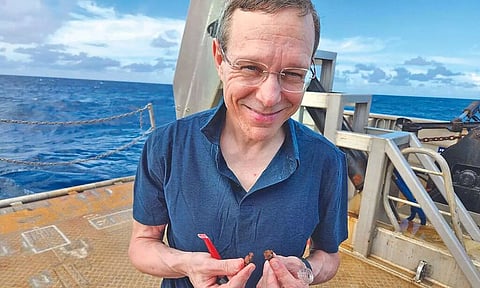

On Jan. 8, 2014, a fireball from space blazed through Earth’s atmosphere and crashed into the sea, north of Manus Island off the northeastern coast of Papua New Guinea. Its location, velocity and brightness were recorded by US government sensors and quietly tucked away in a database of similar events.
That data sat for five years, a source of no contention until Avi Loeb, a theoretical astrophysicist at Harvard University, and Amir Siraj, then an undergraduate student at the university, stumbled across it in 2019. Based on its logged speed and direction, Siraj identified the fireball as an extreme outlier. Last month, Dr. Loeb led an expedition to retrieve fragments of the fireball off the western Pacific seafloor.
On June 21, he claimed that he had. And such discoveries, he says to the chagrin of many of his colleagues, may be the way scientists find evidence of extraterrestrial life. “Not biological creatures, the way you see in science fiction movies,” Dr. Loeb said. “It’s most likely a technological gadget with artificial intelligence.”
Many astronomers, though, see the announcement as the latest example of Dr. Loeb making an outlandish declaration that is too strong and too hasty. His pronouncements (and a promotional video in Times Square about the search for extraterrestrial life) skew public perception of how science actually works, they say. “People are sick of hearing about Avi Loeb’s wild claims,” said Steve Desch, an astrophysicist at Arizona State University.
“It’s polluting good science — conflating the good science we do with this ridiculous sensationalism and sucking all the oxygen out of the room.” Dr. Desch added that several of his colleagues were now refusing to engage with Dr. Loeb’s work in peer review, the process by which scholars evaluate one another’s research to ensure that only high-quality studies are published.
“It’s a real breakdown of the peer review process and the scientific method,” he said. “And it’s so demoralizing and tiring.” For much of his career, Dr. Loeb has been a powerhouse of a cosmologist, churning out hundreds of papers on black holes, dark matter, the first stars and the fate of our universe.
But he has been captivated by the search for aliens since an interstellar object named Oumuamua zoomed by our planet in 2017. While scientists debated whether that visitor was an asteroid or a comet from another star system, Dr. Loeb made the case that it could be an artifact of intelligent life.
Dr. Loeb also began studying the fireball catalog from the Center for Near Earth Object Studies at NASA. That led to the object that had been detected in 2014. From its direction and speed at impact — 28 miles per second — Dr. Loeb and Siraj concluded that the fireball had been moving too fast for something gravitationally bound to our sun. That meant, like Oumuamua, it must also have been interstellar.
They wrote a paper about the discovery in 2019. It was initially rejected by The Astrophysical Journal, but the same journal then accepted it for publication last November, several months after the US Space Command announced in a memo circulated on Twitter that measurements of the fireball’s velocity were accurate enough to infer interstellar origin.